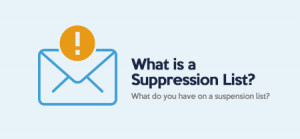Email providers like Gmail, Yahoo, and others, can decide whether or not your emails should make it to your recipients’ inboxes based on your sender's reputation. Simply put, email providers fight spam, and you must make sure that your emails cannot be categorized as spam. Therefore, you should know how to maintain a good sender reputation and avoid some common mistakes.
Experienced marketers know that writing an email with a good call to action is not enough. Beginners often forget how important it is to pay attention to the content of emails so they often create a basic campaign and consider the job done once they’ve hit the send button. The truth is that email marketing is much more complicated, and you should keep in mind many important factors.
For instance, you need high deliverability and low bounce and unsubscribe rates. In this article, we will consider sender reputation in more detail and share some actionable tips on how you can keep a good sender reputation, making sure that your email campaigns are actually effective.
What Is Email Sender Reputation?
Email sender reputation includes domain and IP reputation. IP reputation is related to the set of IPs that you get from your email service provider. Most of such IPs are shared among numerous accounts, but you can also purchase a private IP. The latter option is usually quite expensive so most marketers use shared IPs. All of these addresses have a certain sender reputation, and email servers analyze this reputation to decide whether or not emails from these addresses can be trusted.
IP reputation is so important for email servers that as much as 83% of failed email deliveries are a direct result of poor reputation. It’s also important to keep in mind that you cannot build a good sender reputation overnight. It can take years to build a great IP reputation, and it can also be ruined with a single bad campaign. Besides, your sender reputation depends on your domain reputation. Even if you have a great IP from one of the best service providers, it won’t help you if your domain reputation is bad.
Domains with a bad reputation are known for sending suspicious emails so you should avoid them. Your domain reputation can undermine the success of your campaigns even if you have a good sending history. For instance, you should keep it in mind when working with free Gmail or Yahoo accounts because they are used to send spam very often. The more emails you send, the more careful you should be.
You should also keep in mind that your IP and domain reputation is directly related to your content reputation. Some types of content act as triggers for email service providers that use content filters. Attachments that look like viruses and text that looks similar to spam messages will damage your content reputation and therefore hurt your deliverability rates.
How Email Providers Evaluate Sender Reputation
Email service providers use different types of software to monitor senders’ behavior and determine how risky emails from a certain IP address can be. To evaluate sender reputation, such software analyzes such factors as the quality of contacts to which you send your emails, these emails’ engagement level, the quality of content, and sending volume trends.
These are just a few of many factors that email providers consider to determine sender reputation and filter spam. Therefore, you should not only use IP addresses and domains with a good reputation but also put a lot of effort into creating decent content that won’t resemble spam and will be actually interesting for your recipients. We will consider some dos and don'ts of email content in more detail later.
How To Check Your Sender Reputation
If you realize that your deliverability rates are far from perfect, you should check your sender's reputation. You can do it in different ways. For example, Google has its Postmaster Tools. This is a great source of data on your high-volume campaigns. Postmaster Tools enable you to check Gmail delivery errors, your IP and domain reputation, and many other stats.
Microsoft also offers a solution called Smart Network Data Services (SNDS). This service allows you to check your IP reputation, spam complaint rate, and stats on emails that end up in Microsoft spam traps. Keep in mind that not all email service providers enable you to check your sender's reputation. Postmaster Tools and SNDS will help you check your reputation if you’re using Gmail or Microsoft as email providers, but their evaluation won’t affect the way other providers see your emails. To see a bigger picture, you can also use third-party solutions like SenderScore or Trusted Source.
How To Improve Your Sender Reputation
-
Authenticate your domain
You can help email servers understand that you can be trusted by letting them know who you are. To do it, add authentication to your accounts. For example, you can use such standard authentications as DKIM, SPF, and DMARC. If your deliverability rates are low, ensuring proper authentication is one of the most important things you should do.
-
Grow your email list organically
Your bounce and unsubscribe rates, as well as spam reports, have a direct impact on your sender's reputation. The good news is that you can address all of these problems by growing your email list organically. Your subscribers should subscribe to your emails intentionally, and they should always be aware of the fact that you add them to your email list. We recommend that you always use double opt-in so that every subscriber will confirm their subscription.
-
Clean your email list regularly
Not only should you make sure that all recipients from your list actually want to be there, but you should also make sure that your list only contains active users. Email accounts, especially business accounts, often get deactivated. People change email providers and addresses all the time, and they usually don’t bother to unsubscribe from all the newsletters they’ve subscribed to. Besides, some users can simply stop opening your emails. As a result, such accounts can damage your open rates and increase your bounce rates. The best solution is to separate the main group of subscribers from inactive accounts. You can send re-engagement drip campaigns to inactive subscribers, but if you don’t win them back, the best solution is to remove them from your list. There is also a lot of software that enables you to remove inactive subscribers automatically.
-
Improve your engagement
First, you should pay attention to your subject lines and test different subject lines to choose the most effective ones. Make sure that your subject lines don’t contain words and phrases that are associated with spam emails, such as “free,” “discount,” “% off,” “buy now,” “you won,” etc. You may need to read an article about how to test subject lines. You should also make sure that your content is engaging and relevant. Relevance is one of Google’s main priorities. For example, when someone googles “write my research paper for me”, Google displays dissertation writing services and similar websites. If your emails are not relevant, you will have low open rates and high unsubscribe rates. Keep your emails concise and test different calls to action.
-
Test frequencies
Don’t send your emails too often, and make sure to send them consistently. For example, if you send a weekly newsletter, send it on the same day of the week, and try to do it at the same time, as well. Too frequent emails are the main reason why people unsubscribe, so the best approach is to let subscribers choose how often they want to hear from you.
Common Mistakes
-
Purchasing email lists
Never purchase email lists on the internet. First, these low-quality contacts won’t help you achieve your business goals. Secondly, email lists that are sold online often contain spam traps — addresses that will make your email address blacklisted if you send something to them. Lastly, purchasing email lists violates the CAN-SPAM act, meaning you may pay $16,000 in fines for each email sent this way.
-
Collecting misspelled addresses
To err is human; when people give you their email addresses, they may make typos. If you send your emails to misspelled addresses, they will result in hard bounces, which in turn can cause serious damage to your sender's reputation. Use double opt-ins, and you may also use real-time email verification before you add addresses to your list.
-
Keeping spam traps in the email list
Spam traps are very dangerous because they can make your address blacklisted in no time. There are two types of traps: pristine traps and recycled spam traps. Pristine traps are addresses created by blacklist operators and email service providers. They may get collected from the internet as data and end up in your list. Therefore, it’s especially important to growing your list organically. Recycled spam traps are addresses that used to be active but then got deactivated. Many months later, email providers reactivate these addresses and use them as traps — if you send emails to these addresses, you will get blacklisted. This is the main reason why you should keep your email list clean and remove inactive subscribers.
-
Sending poor quality content
Don’t make your emails too sales-focused. The quality of your content has a direct impact on the success of your emails. Make sure that they actually deliver value and are interesting to read. Make your emails mobile-responsive and format them properly for better readability. Test all of your links and CTAs.
Wrapping Up
Your email sender reputation determines how successful your email campaigns will be. Email service providers fight spam, and if your emails resemble spam, they won’t make it to the inboxes. Besides, you should make sure that your emails are actually interesting for recipients so that they won’t unsubscribe or ignore you. We hope that our tips will help you improve your email sender reputation and avoid some common pitfalls.






